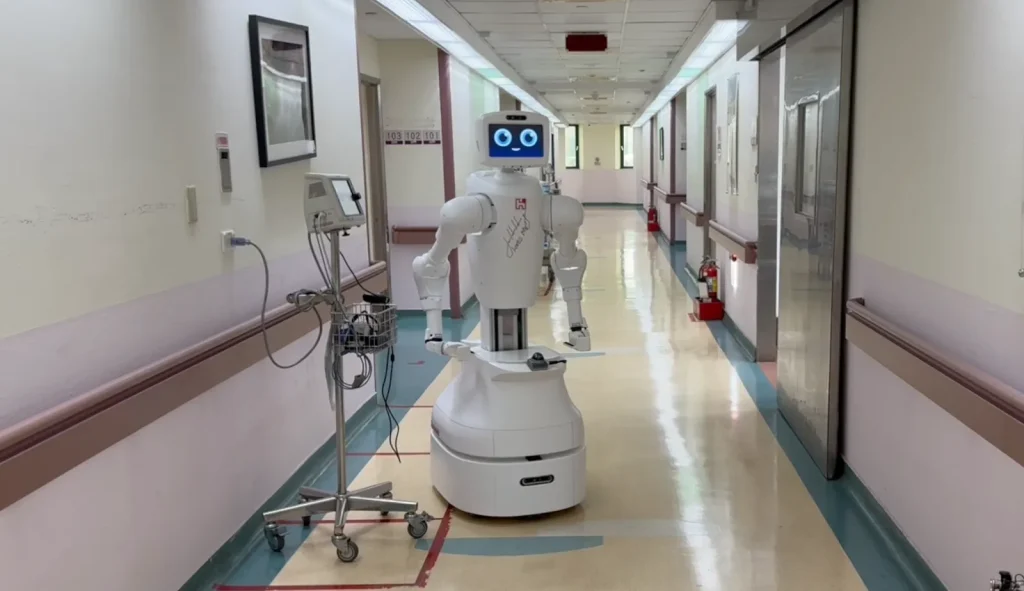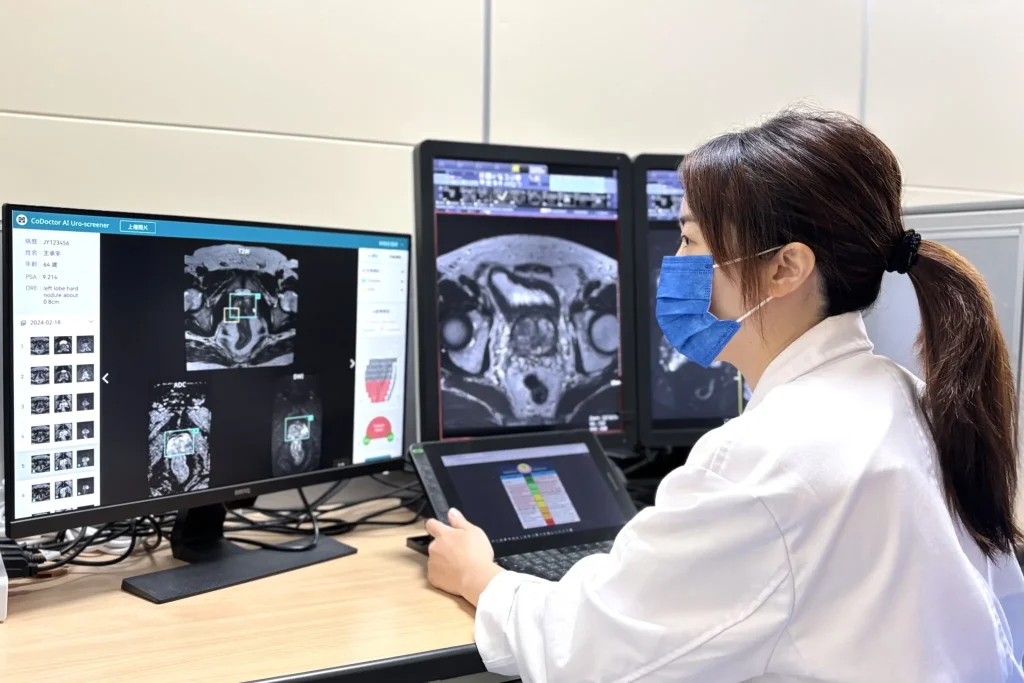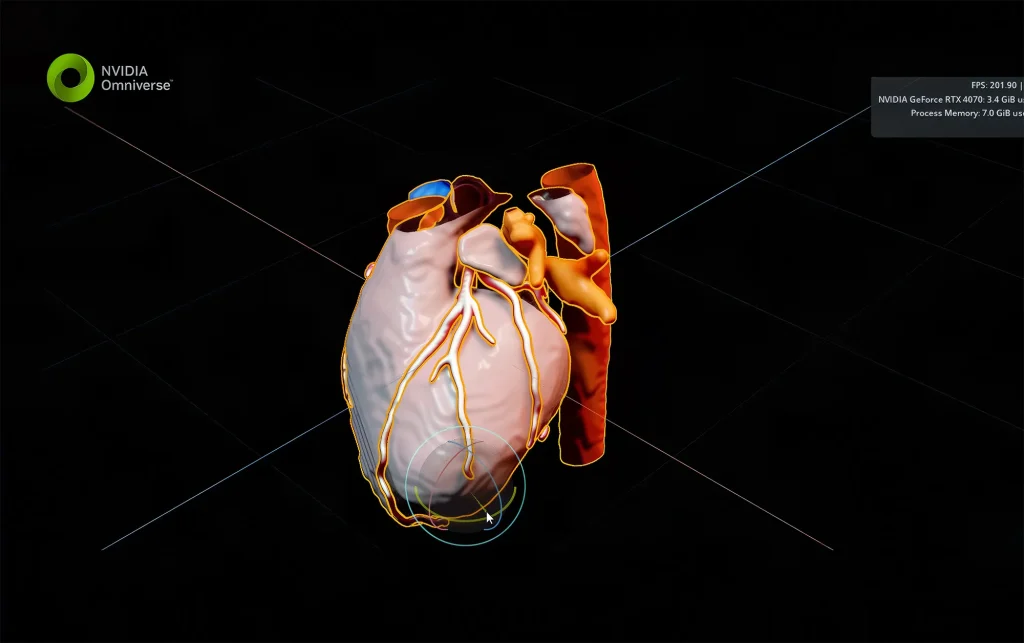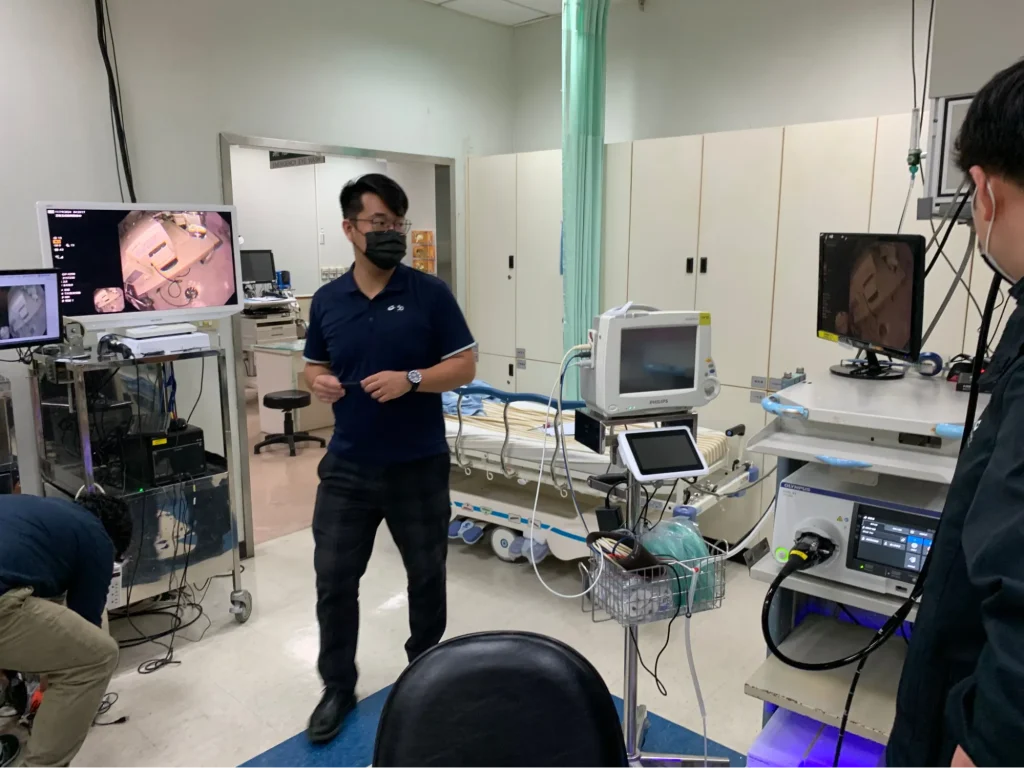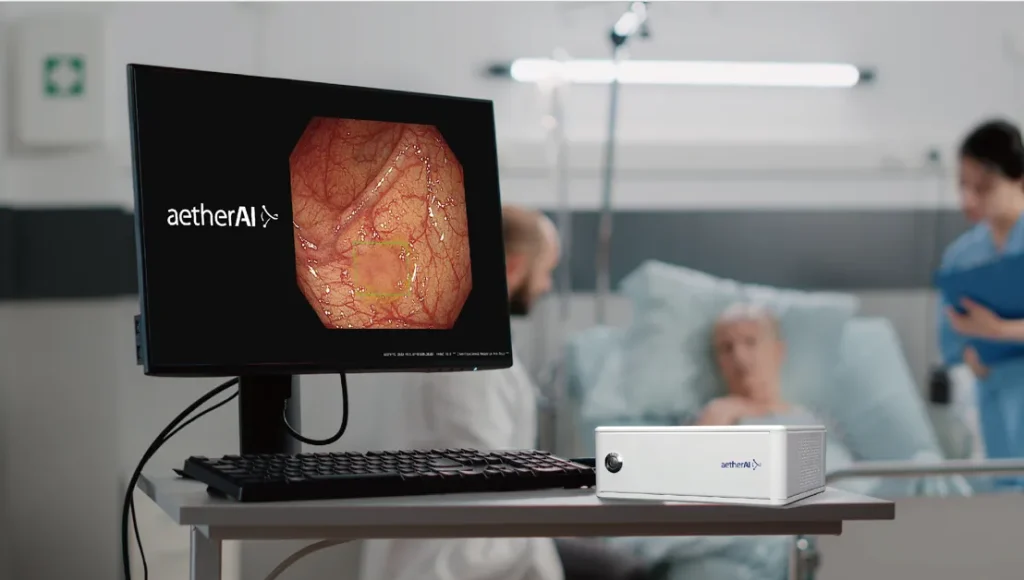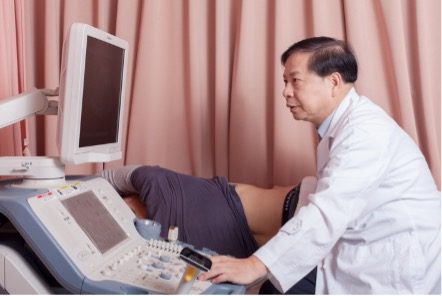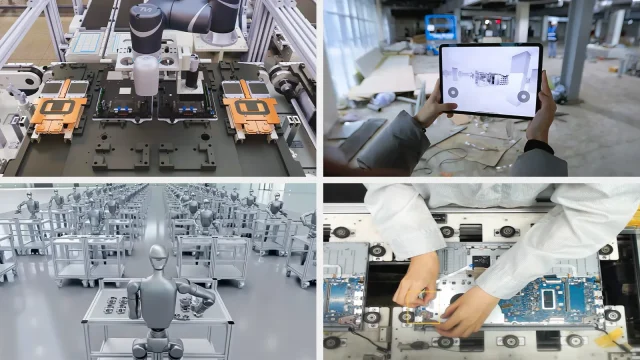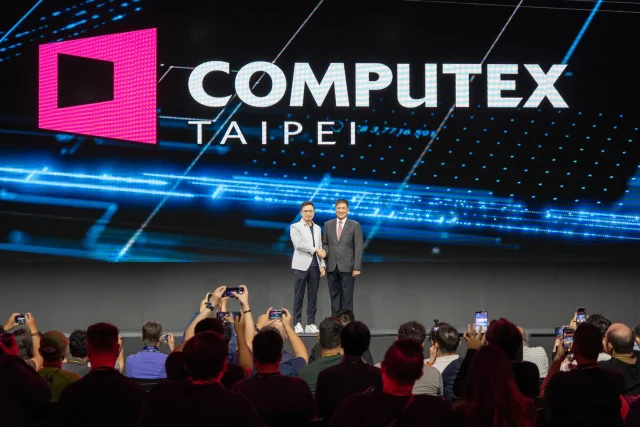With the theme of agentic and physical AI being NVIDIA’s focus for this year’s COMPUTEX expo, they have shared some ongoing experience of integrating those 2 themes into the medical field with assistance from fellow partner Foxconn.
This little thing here is called Nurabot, and this isn’t just a standalone project, as it is part of a whole ecosystem of smart hospital solutions Foxconn is rolling out in Taiwan. Powered by NVIDIA’s AI tech to develop tools for health monitoring, hospital layout planning with digital twins, and more, the entire goal is much more ambition, representable in a 3-step process: train huge AI models on supercomputers, simulate hospital environments using digital twins, then deploy real-time AI on edge devices like robots and sensors inside the hospitals.
As the world is on track (unfortunately) to be short about 4.5 million nurses by 2030, with the major reason being burnout, a robotic assistant such as Nurabot can easily take over repetitive, tiring tasks like delivering meds and transporting lab samples.
Nurabot itself was built with Kawasaki Heavy Industries and combines everything Foxconn’s been working on – from FoxBrain to NVIDIA’s Jetson Orin chip and Holoscan sensor platform. In practice, it’s already being used to deliver wound care kits and health materials bedside. Foxconn says it can potentially cut nurses’ workloads by 30%.
It even lends a hand during night shifts and visitor hours, guiding people through the ward and saving staff from doing it themselves. Nurses say it’s making a real difference, and there are hopes the robot will soon be able to speak multiple languages and recognize individual patients.
In some cases, it could even help nurses physically move patients, something that often takes two people. With Nurabot helping out, one nurse might be enough, freeing the other for other care duties.
Hospitals like Taichung Veterans General Hospital (TCVGH), Baishatun Tung Hospital – Mazu Hospital, and Cardinal Tien Hospital are already testing these systems out. For example, TCVGH is currently running a field trial with Nurabot.
Behind the scenes, it all starts in the data center as Foxconn has built an LLM called FoxBrain using NVIDIA’s NeMo framework and Hopper GPUs. It’s capable of everything from speech recognition to natural language processing. That tech powers the CoDoctor AI platform, which is helping with medical tasks like retinal scans, heart monitoring, and even cancer screening.
One hospital, Tungs’ Taichung MetroHarbor, is already using CoDoctor AI for radiology workflows. Foxconn is also working on using AI to analyze live hospital video feeds for anything from patient emergencies to creating visual summaries for management.
They’re also contributing to open-source projects like MONAI, offering up their coronary artery segmentation model (CoroSegmentater), which helps with diagnostics and surgery planning. Hospitals can even visualize things like a 3D model of a patient’s heart using NVIDIA’s Omniverse platform.
But it doesn’t stop at anatomy. Foxconn is simulating entire hospital facilities with Omniverse too. For example, TCVGH has created a digital twin of its nursing station to train Nurabot in virtual hallways before putting it to work in the real thing.
Not only are NVIDIA’s AI in physical form, but they are also excelling in the software part, particularly in diagnosis to obtain as much golden period for patients.
Take Chang Gung Memorial Hospital (CGMH), for example. With over 8 million outpatient visits a year, they serve a massive chunk of Taiwan’s population. They’ve started using AI to improve how colonoscopies are performed. By partnering with Advantech and building on NVIDIA Holoscan, they’ve developed a real-time AI system that helps identify and classify polyps during the procedure. The result? Faster, more accurate diagnostics that reduce the burden on doctors.
CGMH isn’t stopping there either. Their entire AI infrastructure, powered by NVIDIA platforms like DGX, Clara, NeMo, and MONAI, supports nearly 50 AI models in daily use – from speeding up newborn screening to enhancing medical imaging analysis. One example: they used NVIDIA Triton to cut the time it takes to process newborn records by a factor of 10.
Meanwhile, Cathay General Hospital has its own take on AI-assisted colonoscopies. Working with Onyx and aetherAI, they’ve created a compact, plug-and-play system that highlights lesions and catches tricky polyps. It’s trained on over 400,000 annotated images and has achieved impressive results – 95.8% accuracy and up to 30% higher adenoma detection rates. That kind of improvement can make a real difference in patient outcomes.
Then there’s National Taiwan University Hospital (NTUH), a cornerstone of Taiwan’s healthcare system. They’ve taken on cardiovascular and liver cancer diagnostics with AI. One of their models, HeaortaNet, uses CT scans to map out arteries and detect heart risks – cutting analysis time from an hour to just under half a second. For liver cancer, NTUH partnered with YUAN and the Good Liver Foundation to build an AI system that runs on Jetson Orin NX, helping clinicians spot tumors during ultrasound exams in real time.
All of this is part of a much bigger push – using AI not just to modernize medicine, but to make it faster, more accurate, and more accessible, especially in overburdened healthcare systems. And if what’s happening in Taiwan is any indication, this could be the blueprint for smart hospitals everywhere.

